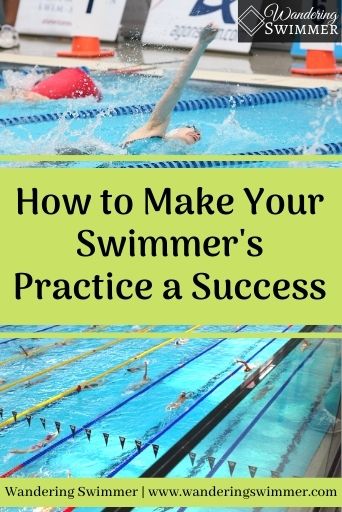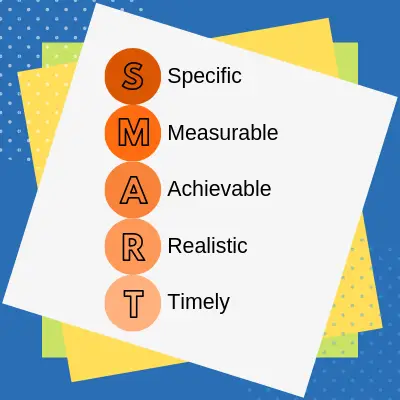Many parents question what they can do to help ensure that their child’s swim practice is a success. Which, in turn, leads to better swim meets. At least in theory! 🙂
Because while a swim practice may only last an hour or so on paper, in actuality, it’s much longer than that. It starts well before your child leaves for the pool. And it continues long after the practice ends.
Related articles:
So how do you ensure that your child has the best practice possible? And how do you fit into that role?
Below are some helpful tips for you as a swim parent to help guide and encourage your swimmer to success at practice.
Disclosure: This post may contain affiliate links, meaning we earn a small commission at no cost to you if you purchase something through one of our links. As an Amazon Associate, we earn from qualifying purchases. Please check out my disclosure page for more information.

Punctuality
There’s a popular expression that goes: “If you’re on time, you’re late.” And in swimming (and life), that’s usually correct!
Arriving early is not just a good habit for swimming, but also life. It’s also one of the first steps to setting your athlete up for swimming success.
Related article: What to Know Before Your Child Joins a Swim Team
Everyone has their own variation of how early to arrive at practice. At a minimum, you should plan to arrive at least twenty minutes prior to practice starting.
Why?
This gives your swimmer ample time to stretch prior to practice. Stretching with bands, cords, and weights help the muscles warm-up and loosen up. When done properly, stretching can help decrease the risk of injury. It’s not something your swimmer should skip or rush.
Additionally, arriving early gives your swimmer a chance to get ready for practice. Such as gathering the gear they’ll need and getting changed into their suits.
It also ensures that your swimmer is in the water on time and has enough time to complete their full warm up. Much like stretching helps wake up the muscles, so too does warm up.
You don’t want your child to be that one swimmer who always shows up late! It’s not acceptable in the workplace and it’s not acceptable during practice 🙂
Preparation
Finding success at swim practice isn’t just based on arriving early to the pool. It’s also knowing the training schedule ahead of time.
Most teams will have a mix of water and dryland workouts. Some teams have dedicated days for dryland only training. Others will combine weight room and pool time in the same practice.
Related article: 9 Words Swim Parents Should Know
Additionally, training times and practice length can vary by day.
Knowing the schedule for the next days practice is an easy but important step towards setting your athlete up for success in swimming. It ensures that they arrive at the correct time, with the right equipment.
It does your swimmer no good if they don’t have shoes and workout clothes for dryland. And it’s a wasted practice that they can’t join, along with a wasted trip for you.
Now, we’re not saying you need to memorize the calendar for the entire season!
However, getting into the routine of checking the practice schedule the night before is a good habit to have. Both for you and your child(ren). Not only does it tell them what to expect for the next day, but also builds up their independence.
Correct Warm-up and Cool down
Warm-up properly
While it might seem like a small part of a practice, proper warm-up and cool-down help set swimmers up for success. Both for the current practice (warm-up) and for the upcoming one (cooldown).
If your son/daughter wants to find success at swim practice, they need to take warm up seriously.
Yes, it’s very tempting to play around during this time. Whether that’s getting in late, skipping laps, or talking with friends. Everyone – myself included – is guilty of this!
Related article: What to Expect at Your Child’s First Swim Practice
Proper warm up though helps the muscles warm up and increases the heart rate. In turn, this sets a familiar feeling that your athlete will have at a meet.
Successful warm ups will get not just the body but also the mind prepped for practice. Swim practice is just as much about working the mind as it is the body.
While you can’t make your swimmer warm up properly, you can help encourage them to take it seriously.
And of course, you can ensure that they complete warm up by arriving early. Again, punctuality is one of the founding blocks to success at swim practice.
Cool down correctly
Whereas warming up preps the mind and body for practice, cooling down does the opposite.
It helps flush out the lactic acid in the muscles, which prevents cramps and sore muscles. All of this aids in better recovery for the next practice
This means that sprinting cool down to get out early does nothing for your swimmer. Just as skipping laps accomplishes nothing.
As a swim parent, don’t make your son/daughter feel they have to sprint so you can leave earlier. Encourage them to finish their cool down properly, or finish as much as they can if you have to leave early.
Related article: The Rudest Things Swim Parents can do at Practice
At the end of the day, having your athlete sprint or skip cool down only hurts their swimming development. It also impacts their mentality for cooling down at swim meets. And their races will likely suffer for it.
A cooldown can also include stretching or rolling out right after practice. While in the water cooling down helps muscles recover, so too does stretching on land.
S.M.A.R.T. swimming
Goals. Every swimmer should have them.
And not just goals for meets, but for practice as well. Because meeting those goals at practice helps your swimmer reach those meet goals.
Going to practice just to make it through the session is a wasted practice. However, when your child has a set goal to work towards, they find success at swim practice.
More Content for You: 8 Things to Do During Your Child’s Swim Practice
The best way to do this is to have your swimmer set S.M.A.R.T. goals for practice.
Something simple but specific as: “I want to do three dolphins kicks off every wall by the end of the season.” This goal encompasses the S.M.A.R.T. acronym and in doing so, gives your child something to work towards.
Every practice should have a goal. Whether that’s tighter streamlines or to hit every interval instead of just making it.
Encourage your child to set these goals and it will guide them to a successful path.

Nutrition
Before practice
Your child should eat something prior to the start of practice. And yes, this does include those early morning workouts.
Swimming burns a lot of energy. Without the proper fuel, your son/daughter will end up feeling lethargic and they’ll probably have a mediocre practice.
What works best will vary by swimmer and it’s a bit of a game to determine what meshes well with your athlete.
More Content for You: Ultimate Guide for New (and Current!) Swim Parents
When shopping, pick something that won’t upset their stomach but also isn’t high in added sugars.
Another thing to watch is how much your athlete should eat before practice.
Not only does this vary by swimmer, it also differs by the type of food. Some food sits heavier in the stomach than others. Too much of it before practice can leave your swimmer feeling sick.
Most of this is through trial and error, but be patient! It doesn’t take long for both you and your athlete to discover what works best.
After practice
Your swimmer should have a small, healthy, protein-packed snack within the first ten minutes or so of finishing practice. This helps the muscles recover quicker and builds up their strength.
For most swimmers, their go-to snack is a protein bar that they packed before practice. Or, it could be a recovery drink. Both are easy to bring to the pool and consume shortly after a workout.
Be sure that you’re picking something that is high in protein and low in added sugars.
My two favorite go-to protein bars after practice are Atkins High Protein Chocolate Peanut Butter bar and Kirkland Signature Protein bar. Both are low in sugar and have high protein.
Hydrate for success
Despite what most people believe, swimmers sweat during practice. Whether in or out of the water.
Because of this, your son/daughter should always have a water bottle on hand for every practice. This includes dryland and water workouts. Bottles with flip lids work best for quick refueling during practice.
Staying hydrated during practice is an easy way to make your swimmer’s practice a success. Proper hydration helps prevent cramps, headaches, and fatigue. Plus, it helps keep the body fueled so it can continue to work.
If your child doesn’t like to drink water, then find a sports drink that’s low in sugar, instead.
In Closing
Behind most successful swimmers is an encouraging voice. One who taught them that practice is more than just showing up and swimming. That a success at swim practice requires dedication at and away from the pool
As a swim parent, you’re more than just a chauffeur. You have the opportunity to guide your swimmer to success through encouraging healthy habits.
So help your athlete get on the path to success by determining what type of swim parent you want to be.
Encouraging or just existing?
As always, happy swimming!
–Chevron
Bonus Swim Parent Content:
Things You Learn as a New Swim Parent: It’s your child’s first year of swimming and you’re feeling lost. Welcome to being a new swim parent! Here are 16 things you’ll learn as a new swim parent.
8 Tings Every Swim Parent Should Know: There’s a fine line between being supporting and overbearing. As a swim parent, you need to learn how to find that balance.

Want to Improve at the Pool?
Join swimmers and swim parents to receive my free newsletter and receive a free Swimming Glossary e-book as a thanks!
Every month you’ll receive tips and coaching to help you find success at the pool.
About
Chevron is a current competitive swimmer with almost 20 years of experience in the pool. And although she fell into the sport by accident in her high school years, she still trains daily and competes throughout the year. She’s committed to providing guidance to all levels of swimmers and believes that everyone should know how to swim.